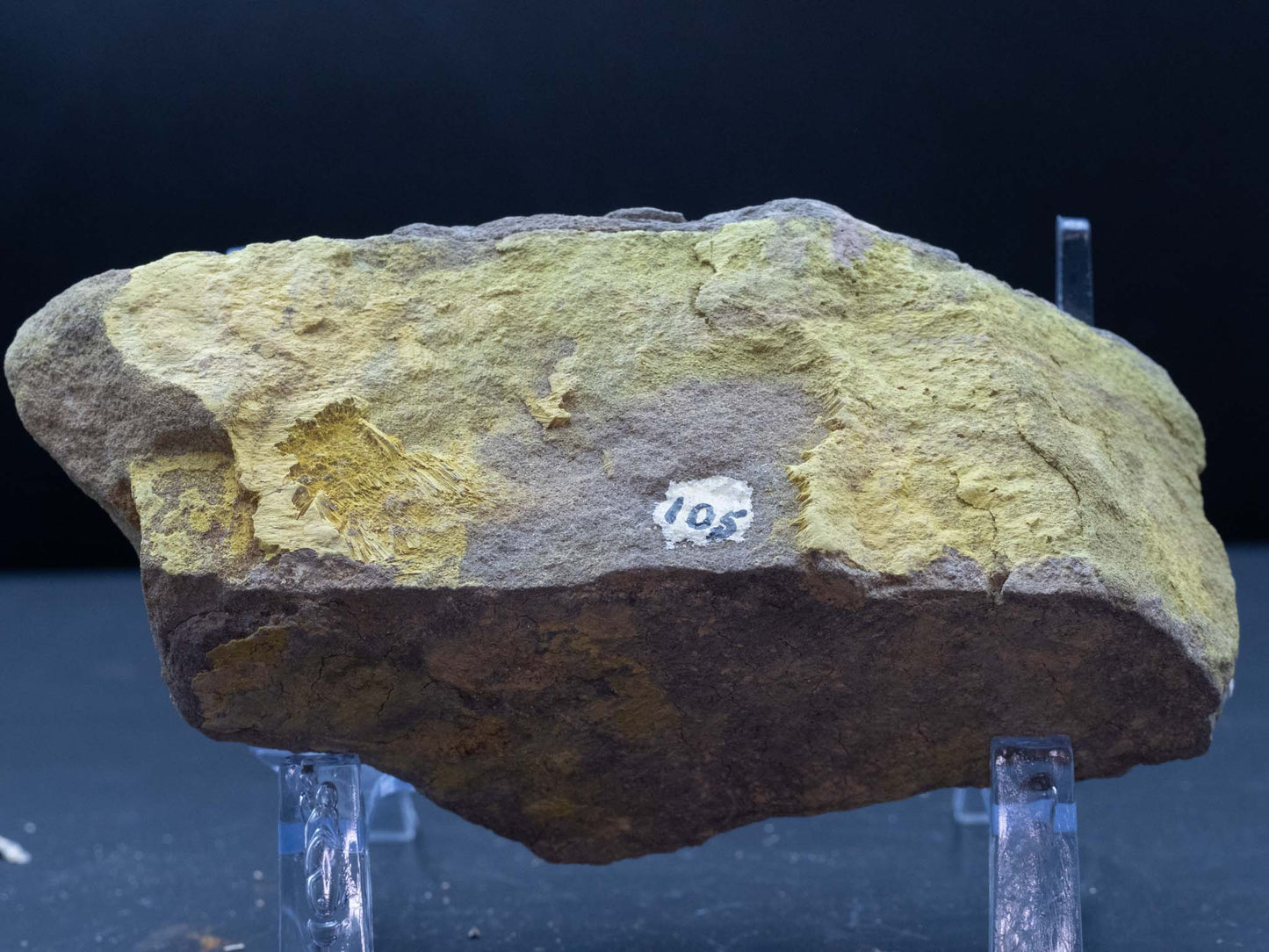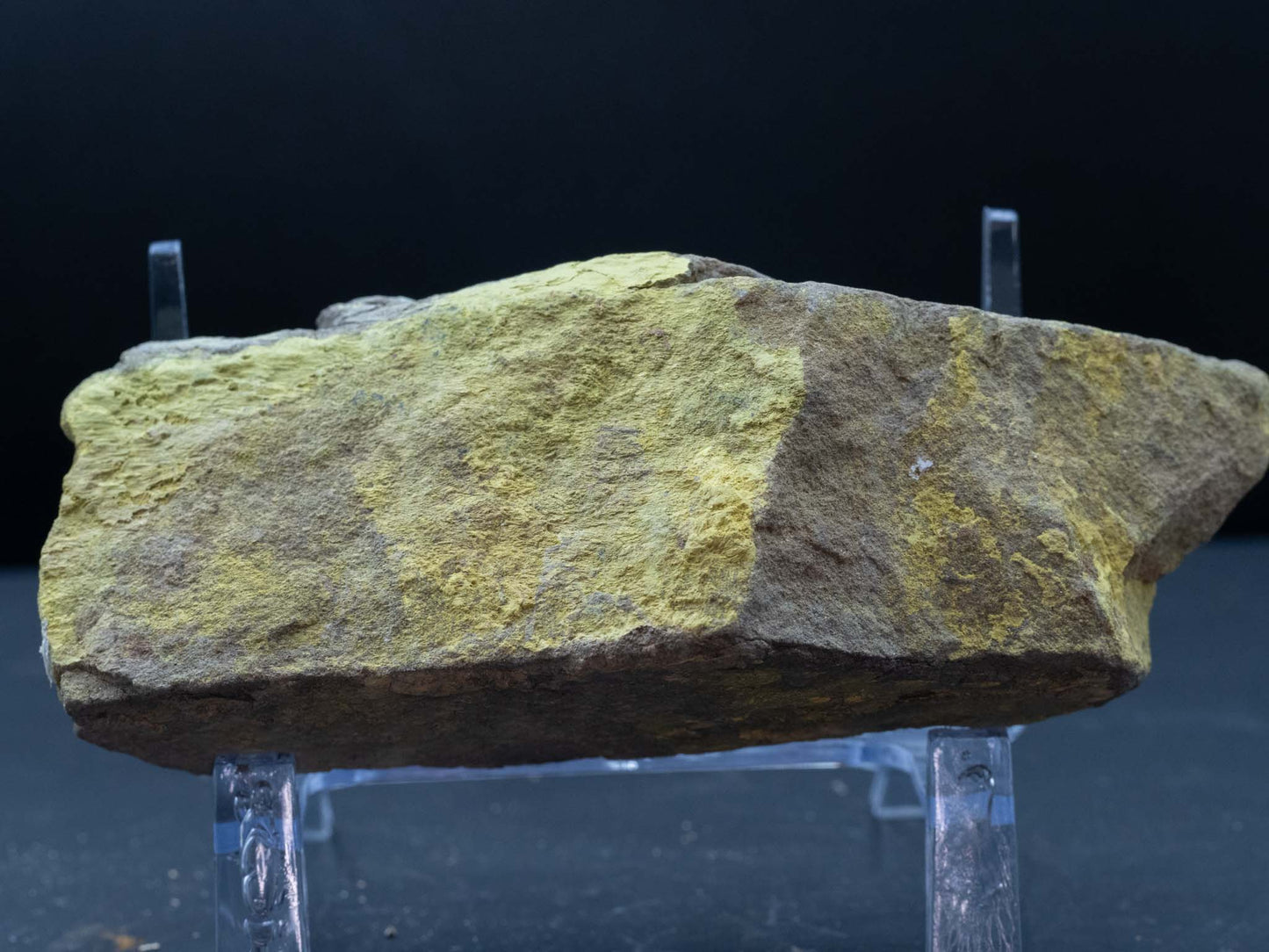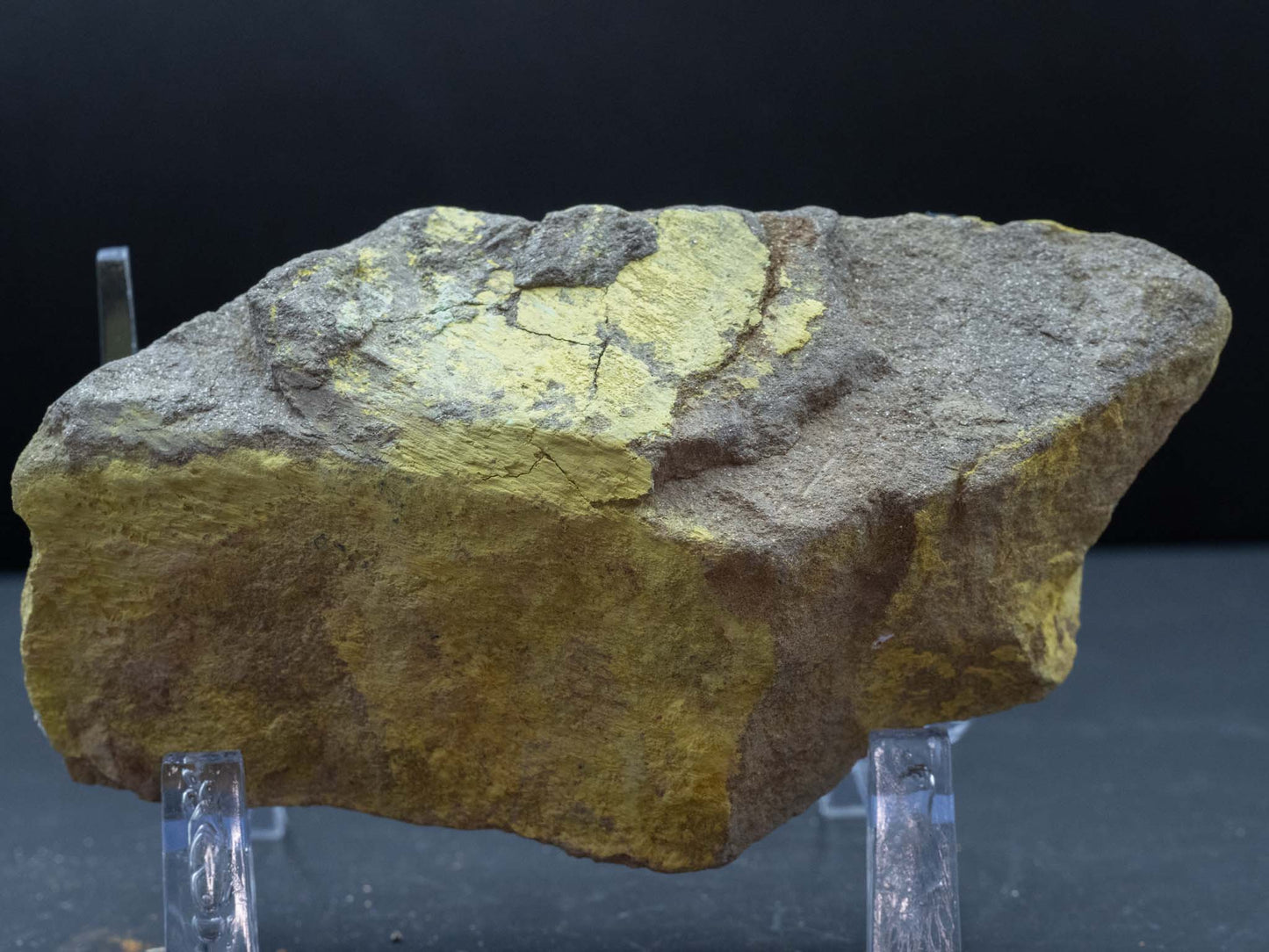Rad Man Minerals
Carnotite/Tyuyamunite - Big Indian Wash, Utah, USA
Carnotite/Tyuyamunite - Big Indian Wash, Utah, USA
Couldn't load pickup availability
 K2(UO2)2(VO4)2 · 3H2O Ca(UO2)2(VO4)2 · 5-8H2O
K2(UO2)2(VO4)2 · 3H2O Ca(UO2)2(VO4)2 · 5-8H2O
Carnotite and tyuyamunite from Big Indian Wash in Utah are vibrant representatives of secondary uranium minerals, forming as bright yellow to greenish-yellow crusts and aggregates on sandstone and other host rocks. Carnotite, a potassium uranium vanadate, is the more prominent of the two, distinguished by its intense yellow coloration and powdery texture. It forms under oxidizing conditions where uranium and vanadium are leached from primary ores and redeposited in permeable rock layers. Big Indian Wash is part of the Colorado Plateau uranium-vanadium belt, making it a classic locality for carnotite specimens. These minerals often appear as delicate coatings or small, fan-shaped aggregates, highlighting the intricate geochemical processes that govern their formation.
Tyuyamunite, closely related to carnotite but containing calcium instead of potassium, occurs as a secondary mineral in the same environment. Its greenish-yellow color often contrasts with the brighter yellow of carnotite, and it can appear as crusts or tiny crystalline aggregates within fractures and pore spaces of the sandstone host. Big Indian Wash specimens of carnotite and tyuyamunite are highly sought after by collectors for their striking colors and association with uranium mining history. These minerals not only serve as beautiful examples of secondary uranium deposits but also provide insights into the migration and concentration of uranium and vanadium in sedimentary environments.This specimen is a large cabinet display specimen from the Mount Holyoke College collection.
Approx. specimen size: 140mm x 50mm x 50mm
Approx. specimen activity with a SE International Ranger EXP: 110 000 cpm








